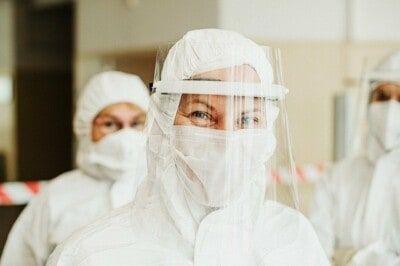What you need to know about protective gowns
COVID-19 has placed a critical focus on infection control and personal protective equipment (PPE, gowns, respirators) as nursing homes in particular seek to protect residents, staff and visitors.
How to evaluate and select protective gowns
Selecting PPE gowns or protective coats can be difficult in times of conventional capacity where PPE is abundant.
In times of crisis, the decision can be even more difficult when dozens of protective gowns are needed per day or even per shift. Here are some important questions and considerations.
What are protective gowns?
Protective gowns are used to protect caregivers and staff from infectious droplets, penetrated liquids and solids and to prevent the transmission of microorganisms to residents at risk.
There are two main categories of protective gowns for use in healthcare settings: surgical and non-surgical.
A surgical gown is a personal protective garment worn by health care workers during surgical procedures to protect both the patient and the health care worker from the transmission of microorganisms, body fluids, and particles.
Non-surgical gowns or protective gowns are Class I devices (exempt from pre-screening) designed to protect the wearer from the transmission of microorganisms and body fluids in situations with low or minimal risk of patient isolation.
Non-surgical gowns are not worn during surgical procedures, invasive procedures, or when there is a moderate to high risk of contamination.
The standard provides for four levels:
Level 1: Minimal risk, to be used z. B. In basic nursing care, standard isolation, draping visitors, or in a standard medical unit.
Level 2: Low risk, e. B. when taking blood, during suturing, in the intensive care unit or in the pathology laboratory.
Level 3: Moderate risk, z. B. During arterial blood sampling, placement of an intravenous (IV) line, in the emergency department, or in trauma cases.
Level 4: High risk, z. B. During long, fluid-intensive procedures, surgeries, when resistance to pathogens is required or infectious diseases are suspected (not airborne).
For nursing homes, basic level 1 fluid resistance is generally desirable to combat the spread of COVID-19. A gown with a higher level is not essential because there is not much risk of transferring blood or other body fluids.
For higher fluid resistance requirements, consider a surgical gown with a higher rating.
What’s on the product label is more important than the product name
We use the term protective gown for these purposes. However, they should pay less attention to the product name (z. B. Isolation gowns, nursing gowns, procedure gowns, etc.), but more on the function, intended use, and degree of protection provided. This will be noted on the label or packaging.
During the COVID-19 pandemic, the primary goal is to protect staff in senior care facilities from the spread of COVID-19 and to prevent the accidental transmission of COVID-19 to other residents and staff members.
A non-surgical protective gown with basic level 1 fluid resistance is most likely sufficient. A surgical gown with a higher level is not essential, as there is not much risk of transferring blood or other body fluids.
When selecting protective healthcare gowns, assess the purpose, the material and the difference between clean and sterile.
Experts recommend keeping three things in mind when selecting healthcare gowns:
Purpose of the gown:
During the COVID-19 pandemic, the main goal is to protect staff in senior facilities from the spread of COVID-19 and to prevent the accidental transmission of COVID-19 to other residents and staff members. Basic level 1 fluid resistance is often sufficient.
Material of the protective gown:
What material are protective gowns made of? Usually made of cotton or a synthetic material such as polyester (reusable insulated gowns) or polyethylene or polypropylene (disposable gowns). They can also be latex free.
Synthetic materials tend to be better at blocking fluids and are preferred over cotton to prevent the spread of COVID-19.
Gown clean or sterile
Clean protective gowns are used for isolation, while sterile gowns are used for invasive procedures such as placing a central line. A clean protective gown works well for COVID-19.
How easy is it to put on and take off a protective gown?
The ease or difficulty with which a gown is put on and taken off can affect its effectiveness and potential for self-contamination, especially when removing a contaminated gown.
How many different sizes and fits do you need?
In a world without COVID-19, every staff member would have a gown that fits them perfectly. During the current PPE shortage, this is not realistic in many parts of the world, and a universal size may be the only option.
In such cases, it is still critical to ensure that the gown allows the wearer enough freedom of movement to perform their required tasks while covering as much skin and clothing as possible.
